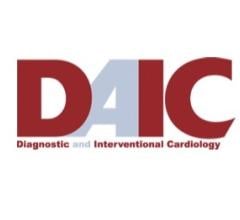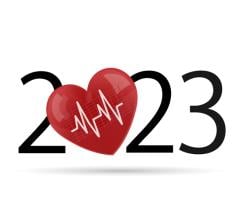
Zio monitor by iRhythm
September 27, 2023 — iRhythm Technologies, Inc. announced the U.S. launch of its next-generation Zio monitor and enhanced Zio long-term continuous monitoring (LTCM) service. Zio monitor is iRhythm’s smallest, lightest and thinnest cardiac monitor, enhancing the cardiac monitoring experience for patients and healthcare providers together with new service enhancements.
The new Zio monitor is a prescription-only ECG monitor, which is an integral part of the Zio LTCM service. The Zio LTCM service consists of a patch ECG monitoring device (Zio monitor), the ZEUS (Zio ECG Utilization Software) System – iRhythm’s advanced AI algorithm which supports the capture and analysis of ECG data recorded by Zio monitor – and a comprehensive end-of-wear report which is reviewed by certified cardiographic technicians. This end of wear report has a 99% physician agreement.2
"We’ve made our best product even better – early clinical and patient experience shows that Zio monitor has even better wear times, comfort and patient experience," said Mintu Turakhia, MD, MAS, Chief Medical Officer, Chief Scientific Officer and Executive Vice President, Product Innovation at iRhythm. “When you combine our new Zio monitor with our advanced AI, efficient workflow, patient and clinician apps, and easy-to-read and actionable clinical reports, we continue to lead the way in the field.”
Building on High Performance
Zio monitor is designed to improve diagnostic yield and provider efficiency through an enhanced patient experience, enabling long-term, continuous wear for up to 14 days. It builds on the high-performance of Zio XT monitor and has:
- An improved form-factor for a better patient wear experience – it is 23% thinner3,4, 62% lighter3,4, 72% smaller3-5 and weighs less than a pencil.6
- Continued high patient compliance with prescribed wear time – Zio monitor demonstrates 99% patient compliance with prescribed wear times7 to help healthcare providers make the right diagnosis the first time.
- Other features that make it easy to wear and allow patients to go about their daily lives 8 – it is breathable, has a hydrocolloid adhesive and a waterproof housing9,10, and requires no device or adhesive manipulation or battery change during the entire wear and monitoring period of up to 14 days.
Enhancing Patient Experience
Together with Zio monitor, iRhythm is releasing the redesigned MyZio® patient app, updated with a new user interface and other enhancements for an even better patient experience. New features include easier symptom logging, educational videos and content, and a redesigned help center to better address patient questions. With the Zio LTCM service covered by many commercial insurance companies, plus Medicare, iRhythm is also introducing new enhancements to the patient experience with improved patient support processes to assist patients in navigating insurance coverage questions and pre-authorizations. The new Zio monitor, together with the Zio LTCM service, provides an elevated end-to-end experience for both patients and clinics throughout their journey with the Zio service.
Clinically Proven Performance
iRhythm’s advanced FDA-cleared AI has a deep-learned algorithm clinically proven to be as accurate as expert cardiologists.11 In addition, the CAMELOT study, which was presented at the American College of Cardiology’s Annual Scientific Session earlier this year, found that in a study population of 287,789 patients, Zio long-term continuous monitoring (LTCM) service, prescribed for up to 14 days of monitoring, is associated with the highest diagnostic yield, lowest likelihood of retesting, and the lowest likelihood of acute care hospitalization compared to all other monitoring services, including other long-term continuous monitors in the study.12
Zio LTCM service can help physicians better identify, diagnose and manage cardiac arrhythmias. It is estimated that up to 5% – or nearly 16 million people – of the general U.S. population experiences arrhythmias.13,14 If not treated, some arrhythmias can damage the heart, brain, or other organs, and may even lead to an increased risk of stroke and death.15 Early detection and treatment of arrhythmias in previously diagnosed patients are important to reduce the burden of cardiac disease.
For more information: iRhythmtech.com


 April 26, 2024
April 26, 2024 




